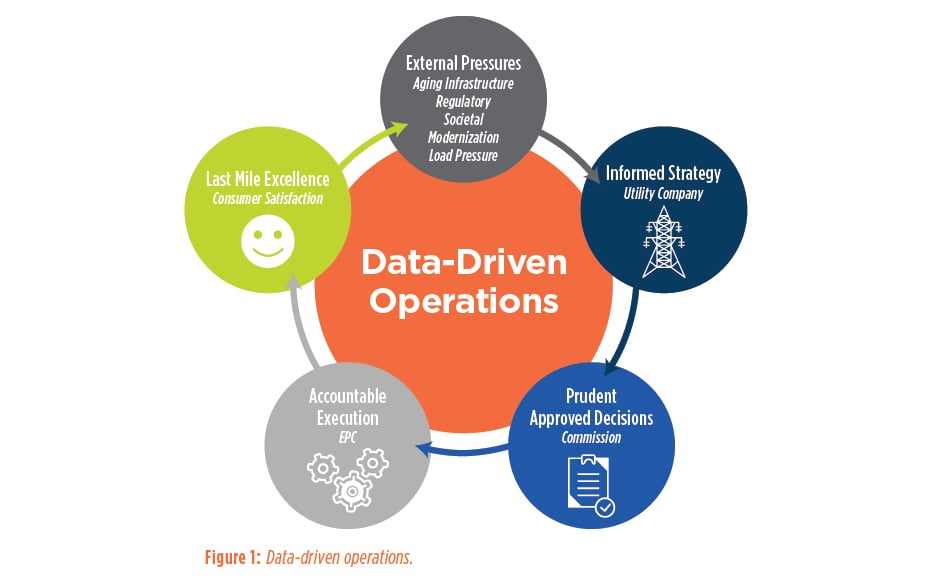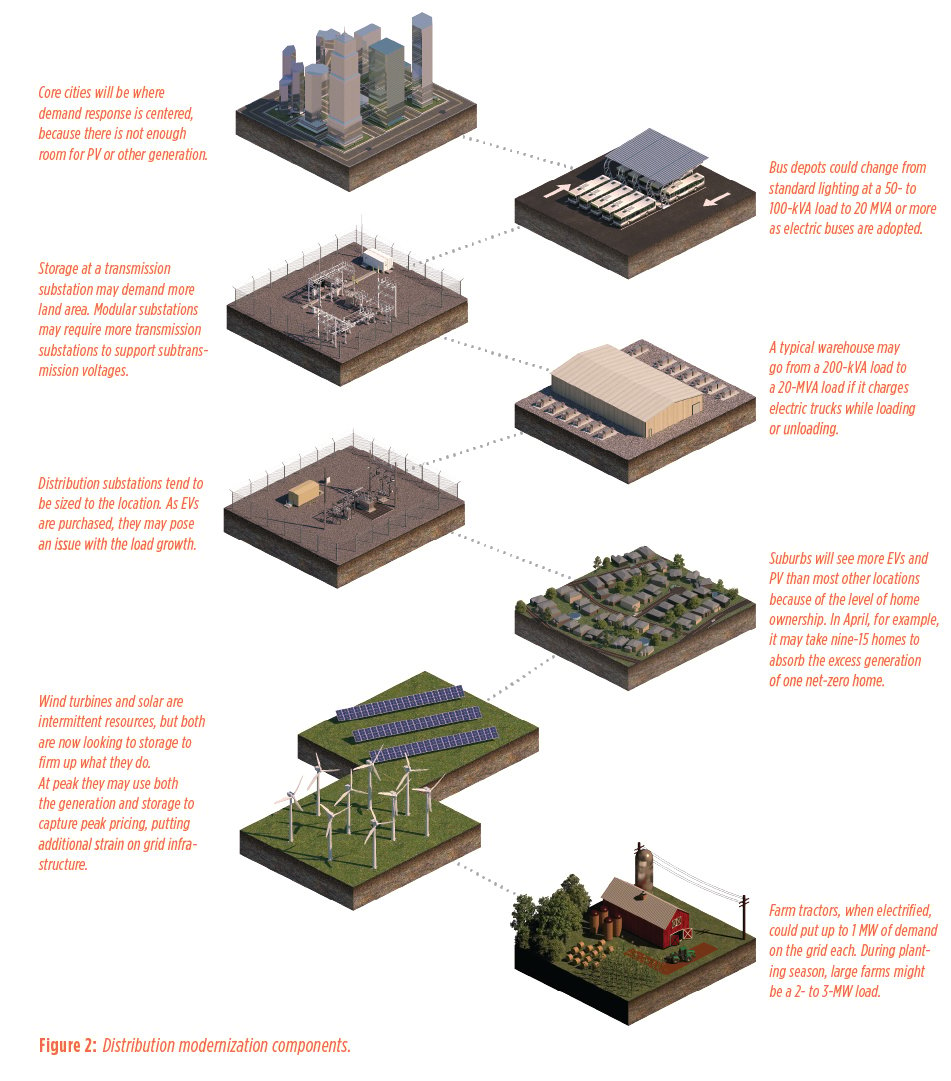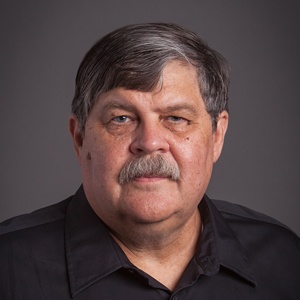
The U.S. electric power system began more than 100 years ago. Today, the more than 200,000 miles of transmission lines are at capacity. Another 5.5 million miles of distribution lines exist. Many of these circuits were created during the Great Depression (including rural electrification), the postwar boom and 1960s suburban construction.
The power grid is enormous and extremely complex. The design standards in many cases still date from a massive effort to update designs in the late 1970s and very early ’80s. Even for some of the most progressive utilities with heavy renewable penetration on the distribution grid, the design standards still predate solar rooftop installation.
The nation’s power grid is struggling to support an always-on society using infrastructure and assets that were designed and installed more than 50 years ago and carefully maintained and rebuilt over that time.
Read The White Paper

The U.S. electric power system began more than 100 years ago. Today, the more than 200,000 miles of transmission lines are at capacity. Another 5.5 million miles of distribution lines exist. Many of these circuits were created during the Great Depression (including rural electrification), the postwar boom and 1960s suburban construction.
The power grid is enormous and extremely complex. The design standards in many cases still date from a massive effort to update designs in the late 1970s and very early ’80s. Even for some of the most progressive utilities with heavy renewable penetration on the distribution grid, the design standards still predate solar rooftop installation.
The nation’s power grid is struggling to support an always-on society using infrastructure and assets that were designed and installed more than 50 years ago and carefully maintained and rebuilt over that time.
Powering Modern Life
The U.S. distribution grid was designed for its time, supporting homes with a refrigerator, lights, radio and television. Large manufacturing was directly attached to the transmission grid, and the requirements for transmission were originally set for keeping the factories running. The grid provided American businesses with electricity to serve generally domestic markets during a traditional five-day work week. Hospitals could rely on the grid for on-site electricity to support patient care and comfort, but when it went failed, hospitals had extensive backup generation on hand to keep the lights on. Farmers, working land that was often at the end of the circuit, had relatively modest electricity needs.
Today, customer power use and expectations from the grid have shifted from relatively modest power consumption to an unprecedented demand for reliable and resilient electricity. Even with energy efficiency measures created under programs like Energy Star, customers keep finding new ways to use electricity.
Homes require power for computers, large-screen TVs and smart devices. Homes also have the potential to have electric vehicles (EVs), on-roof photovoltaics (PV) and at-home battery storage. Businesses offer services with around-the- clock electricity needs and represent new industries, like bitcoin mining. Purchases, transactions and banking are online. Hospitals now send patients home with medical equipment for in-home monitoring. Farmers see opportunity in installing renewable energy resources on farmland. The requirements and demand for reliable electricity are exceptional in today’s world. In the average home, there is no going online without power. Any failure is not acceptable today to many customers.
In addition, more frequent weather-related electrical outage events are putting additional pressure on the grid. High- impact and severe storms, cold and ice storms, heat and wildfires are resulting in major power outages. The industry has responded with new technology and grid resiliency plans.
At the distribution level, the lines were never designed for the farmer at the end of the line to install photovoltaic arrays to generate power, nor were they designed to support an EV in every garage or a farm with a fleet of electric tractors and other machinery. These changes add complexity to the distribution system.
Transmission was built to support balanced power flow that originated at central power stations and flowed to the customers, not unbalanced power flow that might originate on the distribution grid. Until recently, having instrumentation on one phase of transmission was considered acceptable because unbalanced power flow was a minor issue. That is no longer true.
Utilities across the country are assessing how to renovate and modernize the grid to meet the demands of a modern world.
Modernizing the Grid
While grid modernization programs will vary among utilities, there are fundamental components that should be considered for every project. Planning that focuses on making the grid strong, smart and sustainable will help achieve a modern grid that is reliable, resilient, easier to operate and maintain, and environmentally responsible.
Make it strong
Putting a new roof on a building with a foundation that is collapsing is not logical. Any program must start by making sure the foundation is sound. Modernization programs present an exceptional opportunity to create the strong grid customers need. In developing grid plans, utilities should move beyond concerns of “overbuilding” and critically explore approaches and options that will result in a grid that is built to last.
Requirements for the modern grid need to be developed to support customer needs, and design standards need to be updated to address these requirements. New materials (e.g., concrete or steel poles, insulated overhead conductor, etc.) must be incorporated in the new design standards when they make sense for the service territory. Rethinking power generation locations and nighttime cooling periods also should be considered.
How the design standards will be used by future workers is important to how the standards are created (e.g., if you want augmented reality for your new workers, you need the design standards to be in 3D).
Stronger structure
Physical assets, including poles, conductors, wires, substations and transformers, must be robust enough to withstand stress, continual use, thermal loads and all forms of severe weather events.
Utilities should avoid improvements that focus only on fixing the worst pain or projects that emphasize least-cost materials. Effective grid modernization considers long-term advantages against short-term cost. In many cases, implementing a larger plan with better materials offers a greater business impact on customers interrupted and operations and maintenance (O&M) requirements.
Create capacity
In addition to quality structural improvements, the modern grid must be sized to meet even unforeseen future demand and move beyond the “overbuilding” mindset.
Today’s power needs and potential generation opportunities reside at every point on the circuit, and the grid must be capable of handling it. Community solar projects, commercial rooftop arrays, distributed microgrids and energy projects, and even remote farms and properties at the end of the line should be viewed as assets to the overall grid and accommodated in planning. The ability to carry the same amount of power at the end of the circuit as at the substation needs to be a design principle.
Beyond generation growth in the distribution grid is the possibility of EV adoption. One EV can double the total energy that a residence consumes. Getting to 10% of households with EVs is similar to growing the number of residential customers by 7%. A typical northern residence that is net-zero energy with solar PV will use the distribution grid up to 40% more than a similar residence without solar, depending on the location. Building a grid to support these changes is important.
Standardized approach
Progressive grid improvements should be standardized wherever possible to simplify operations and reduce costs. A strong, modern grid reduces substation complexity with uniform components and modular system design. This more holistic approach can lower cost and minimize lead times by relying on bulk-procured, modular substations, transformers and parts. Dropping from dozens of overhead conductors to three or four allows bulk buys, faster repair and less inventory, both in the depot and on the line truck.
Consistent asset designs mean more rapid deployment using in-stock assets, the ability to increase power where and when it’s needed, and less installation delay. With fewer parts and tools, maintenance is simplified, and training is also easier for new technicians or when crews are brought in from outside the area to help support grid events.
We cannot expect better results with the same designs that have failed in the past. Repairing major damage with that approach is likely to result in repeat damage; the new standards should be applied.
Make It Smart
Digitization, fiber optics and miniaturization have all helped to lower the cost and increase the practicality of using advanced sensor capabilities on the grid. Connected consumers rely on intelligent devices and now expect such capabilities from service providers. Modernization efforts are an excellent time to take advantage of technology advancements. Surveys show that younger customers will not typically call to report an outage, because they can’t fathom that the utility is not automatically dispatching the crews.
Grid modernization that is truly smart goes well beyond automated metering. Building a smarter grid affords utilities the opportunity to fundamentally improve operations through outage tracking, analysis, reporting and utility response planning.
Effective grid planning, however, avoids getting swept up in the almost infinite data capabilities and instead zeroes in on the simplest and easiest applications that quickly add value and increase grid efficiency. Programs and elements should work together and build on each other to help transform the operation, interaction and management of grid assets.
Operational metering and sensing
Advanced metering infrastructure (AMI) serves as a backbone for the grid. AMI is the energy measurement and collection system, including on-site customer meters, designed to take full advantage of the complete smart communications system, not just billing tasks.
This two-way communication capability allows for remote measurement of electricity use; service connection and disconnection; tampering detection; outage location, cause and isolation; voltage monitoring; and more. Utility time-based rate programs, peak demand incentives and energy consumption monitoring also are enabled. Using real operational metering means dynamic tap changes can be made to accommodate more generation or prevent low voltage. It also means that capacitor banks can be remotely turned on and off, or that the inverters on solar arrays can be tuned to provide the right amount of reactive power. All of this reduces line losses and provides higher-quality power.
For maximum advantage and optimal capabilities, backhaul communications and allowed latency are designed to support operational goals, not just daily billing needs. Likewise, these smarter sensing capabilities help consumers measure, monitor and take control of their power usage. For the growing number of homes with smart sensors, devices and EVs, AMI is key to helping manage electricity usage and discharge. Eventually, communications need to flow into the premises to support customer decisions.
Distribution automation and substation automation
Modern grid planning must incorporate a robust, reliable and efficient architecture to handle new loads and customer- sited distributed generation (DG), such as solar. Distribution automation (DA) is a crucial component to achieve these objectives, leveraging AMI and other distribution sensors like remote fault indicators or sensors in reclosers. Intelligent planning of the location of DA assets allows them to be at the right locations without putting in too many. Careful evaluation of placement of automatic circuit reclosers (ACRs), feeder switches and loop schemes should occur for all grid upgrades.
Substation automation (SA) collects and analyzes significant amounts of component and control data to further enhance reliability and real-time response to events. By going well beyond traditional Supervisory Control and Data Acquisition (SCADA) systems, SA programs are used to deliver advanced capabilities and improve operations and maintenance. Items like single-phase dry type tap-changers driven by SA can provide dynamic voltage control on each phase, minimizing phase imbalance and maximizing the ability to collect energy from installed DG. With DG, moving transformers from phase to phase to balance the circuit is not possible, because the imbalance changes between day and night.
Smart SA planning addresses a range of considerations, including transitioning to triple singles in a phase-by-phase approach. Protecting power and increasing efficiency comes from the ability to isolate any phase problems while keeping power flowing to customers.
Advanced communication networks
Given the nation’s dependence on electricity, deploying advanced communication networks is vital to supporting a modern grid. Innovative and robust communications provide consistent capability regardless of environmental conditions. These networks also can manage and control grid scheduling, prioritizing data sent and actions needed. Advanced communication networks are used because they are both smart and strong.
For grid modernization planning, smart communications can be designed for transmission, substations, and in the distribution network to the meter and beyond the meter at buildings, homes and offices. Networks capture and transfer the data and insight needed to deliver long-term operational refinement, thereby enabling network predictability and continuous improvement for utilities and customers. Considerable analysis capability can be installed in each of these zones, so that only the critical data must be brought back to the central office; instead, schedules can be pushed to substations and buildings that then manage to those schedules and only report exceptions.
Operational technology and analytics
Although they are installed in the operations center, DA and SA are mostly useless without the systems to analyze the data and make it available to operators. Advanced Distribution Management Systems and other operational technology systems need to be planned into the grid modernization effort.
Make It Sustainable
Modern grid sustainability is twofold: It encompasses environmental responsibility and improves O&M. By attending to both, an advanced grid can be kept strong and smart over time.
Simplifying and reducing grid complexity makes the grid easier to maintain and sustain. Standardizing supplies and components results in fewer parts to purchase, a lower quantity of needed supplies, and greater probability that what is needed will be on hand. Simpler, standardized substations and systems also make for easier training and more readily available field knowledge. Working together, this approach sustains performance. A stronger, smarter grid also enables more environmentally responsible operations, including incorporating EVs, PV, storage and other renewables on the grid. Likewise, in selecting components for the grid, consideration is given to choosing equipment that is environmentally benign and highly recyclable.
Learn, adapt and optimize
Maintaining a strong and smart grid means learning from operations and customer usage to optimize efficiency and performance. Using data analysis and insight, practices and strategies can be adjusted over time to manage usage patterns and reduce failure rates. Smart components encourage customers to take responsibility for energy use. Using this analysis can also define customer programs to meet customers’ needs and desires, while holding prices at a reasonable level.
Data-driven maintenance and vegetation management
Many external assets, such as geospatial data, Google Earth maps, and drones, can complement grid improvements and provide utilities increased understanding about outages and operational threats. Using sensor data, coupled with satellite and terrain imagery, offers a way to proactively manage vegetation and vegetation events such as downed trees, and to schedule maintenance or repair faster and more accurately.
Proactive equipment replacement
Greater grid insight and data tracking can bring attention to load changes and growth trends in communities, planned gentrification programs, and rooftop solar adoption rates. Planning for needed substation modifications or expansion is more efficient and can be budgeted accordingly. With insight into local commercial demand, utilities can proactively plan to support new income-generating opportunities, such as bitcoin mining.
Distributed energy resources (DER) interconnection management
A modern grid, with the ability to sustain long-term technology advancements and support renewable energy adoption, allows for hosting capacity for renewables and DG. More EVs, faster charging, battery storage and highly flexible demand response programs help support the communities of the future.
Conclusion
Quick fixes and tactical solutions won’t deliver the modern grid that consumers need. By holistically evaluating a utility’s entire system — from circuit data to asset performance, power flow, and failure risk to design and operating standards — grid modernization planning becomes comprehensive in scope while modular in design and implementation. Effective modernization planning aims to make a strong, smart and sustainable grid that customers can count on for reliability and resiliency for generations to come.







